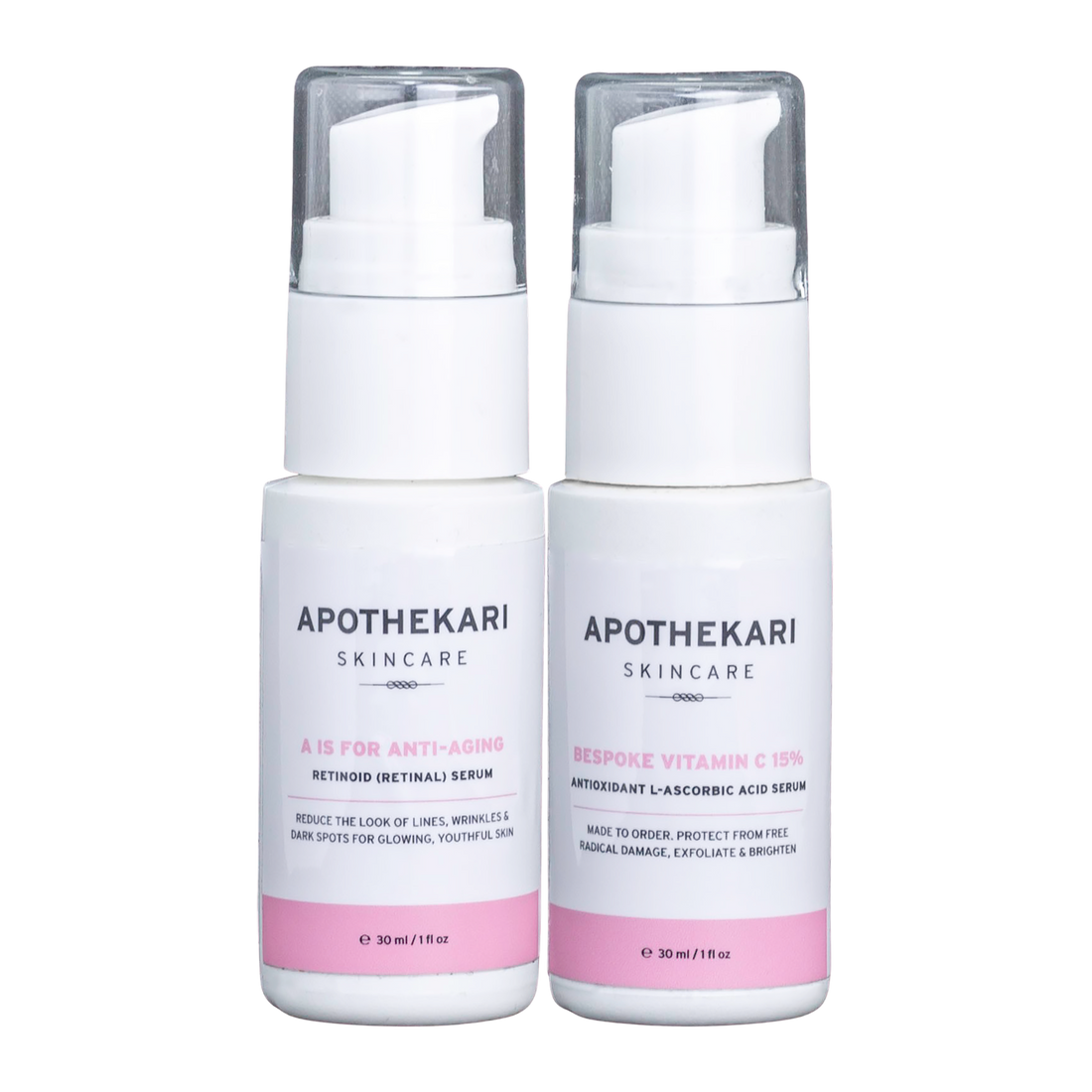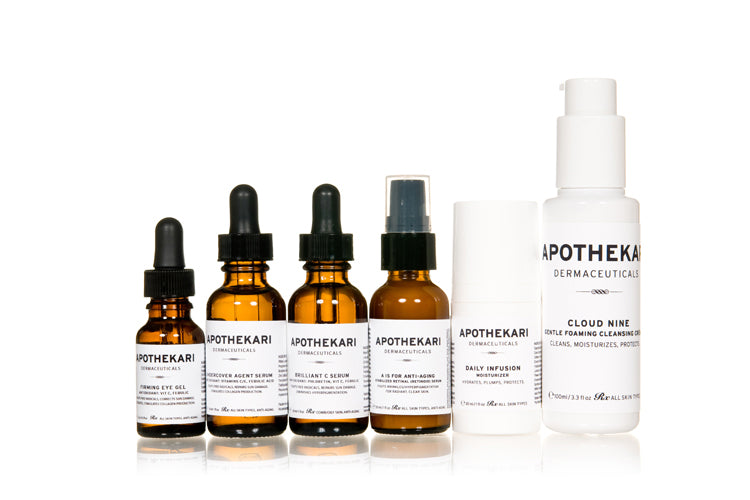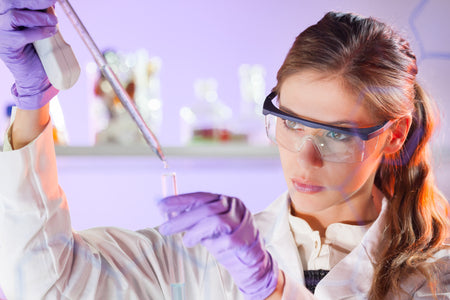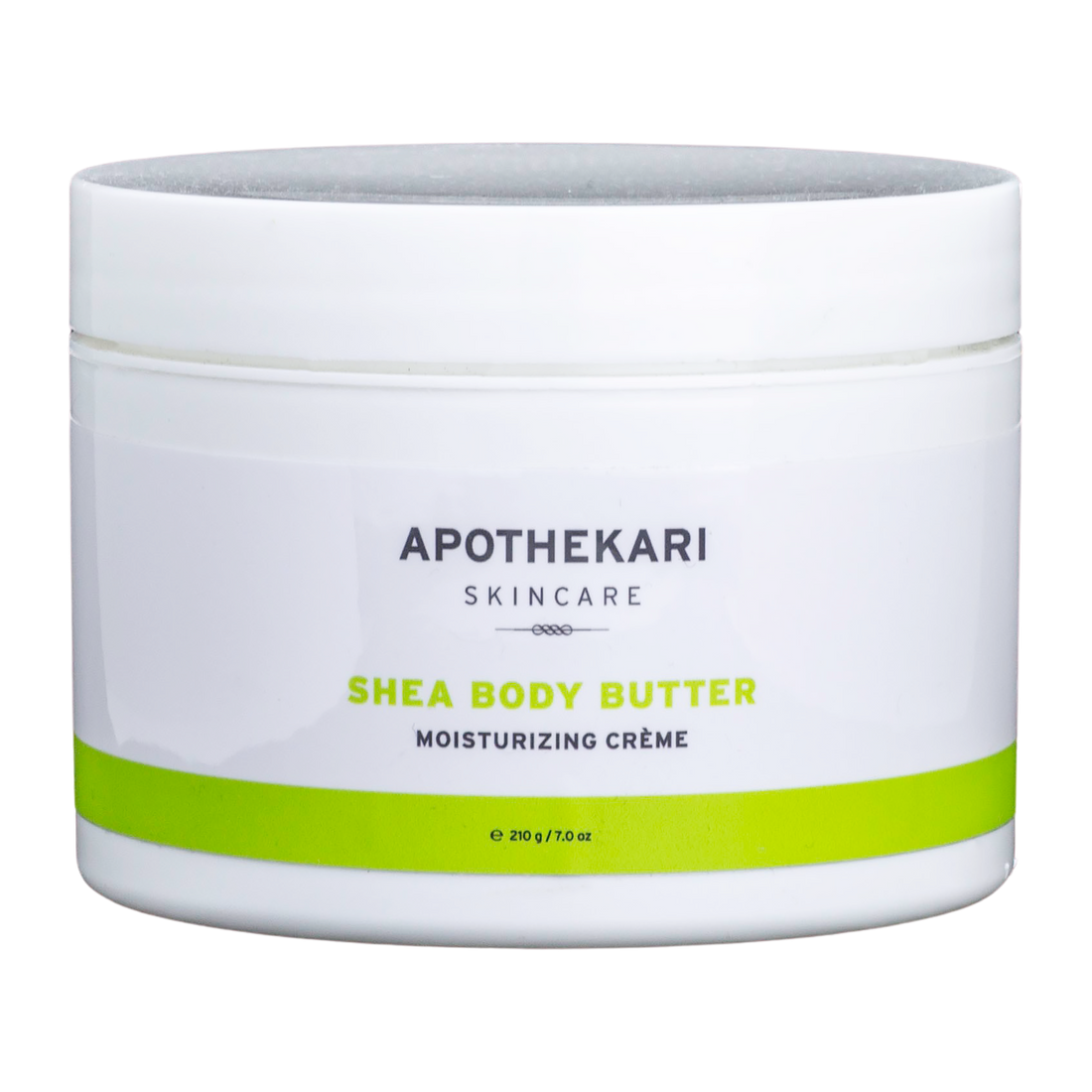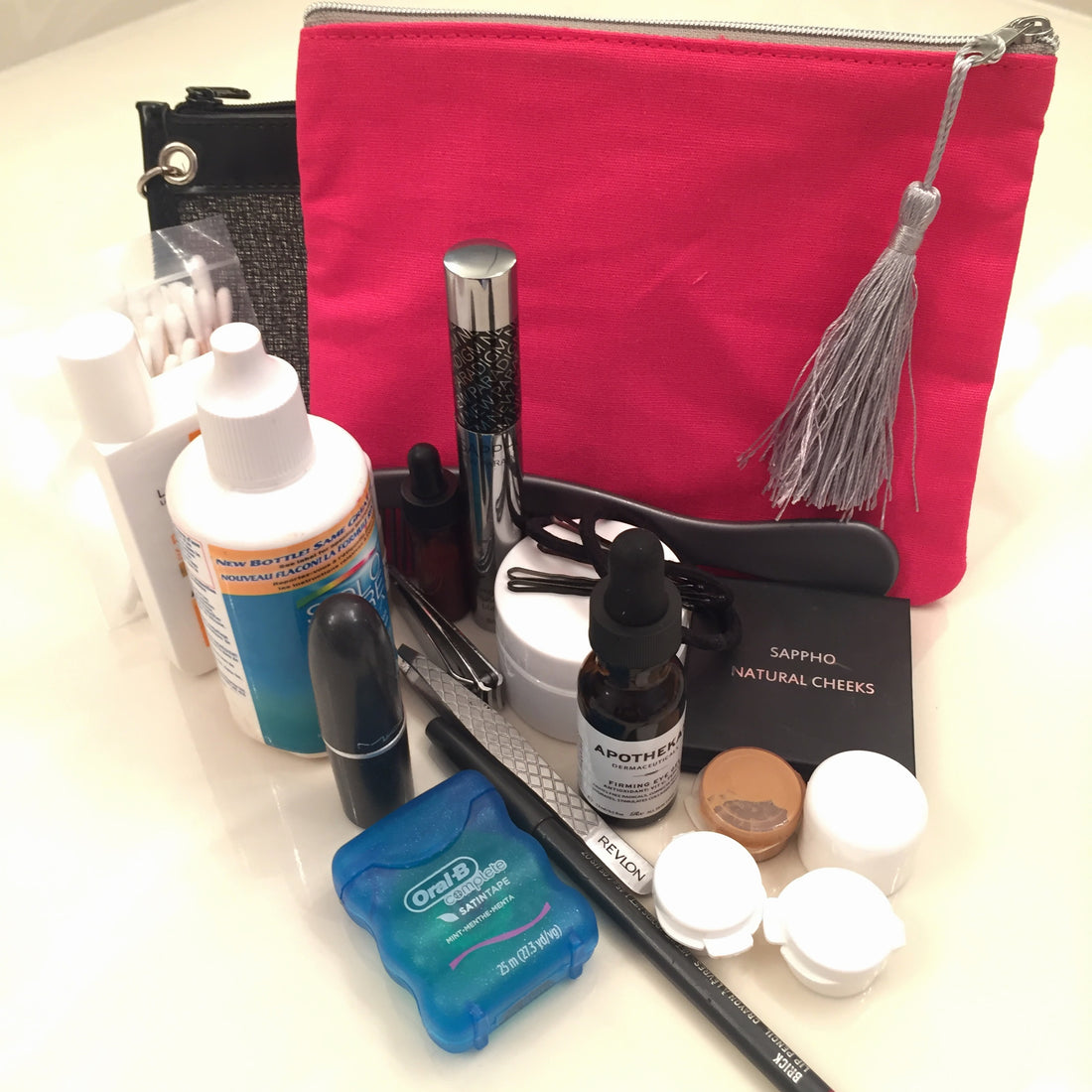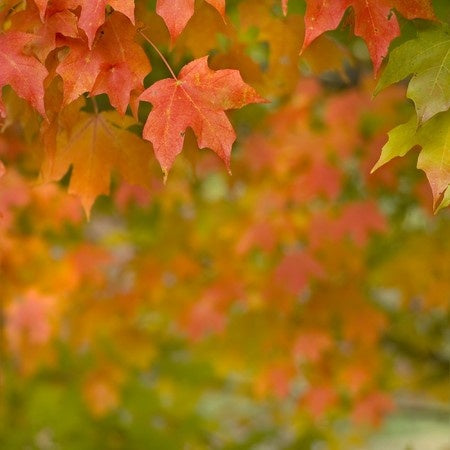Blog
5 Scary Skin Care Habits
In honour of Halloween, today’s post outlines 5 scary skin care habits. These are things we should minimize or avoid as much as possible to ensure the health and wellness of our skin. Shop Cloud Nine Foaming Cleansing Creme 1. Smoking You already know it’s bad for your health; it’s also bad for your skin. Smoking breaks down elastic fibers in the skin (which is why smokers’ complexions look yellow) and amps up the enzyme responsible for breaking down collagen (and that definitely leads to wrinkles), leaving smokers with yellowed, more wrinkled skin. The good news? Quitting will result in improvements – skin texture improves and over time, it becomes brighter too. It’s never too late to quit! 2. Over Cleansing While it’s still important to remove your make-up at night, don’t always reach for the exfoliating, stripping cleanser. Creamy or oil-based cleansers are more gentle and it is a good idea to alternate them with more exfoliating ones. Try Apothekari Cloud Nine Foaming Cleansing Creme. 3. Eating Poorly “You are what you eat”. It’s not just a saying, it really is true. Consuming too much sugar, alcohol or junk food shows on your face. Alcohol is dehydrating and can lead to skin that is dull and blotchy. Try to limit the amount of alcohol you consume by sipping water between drinks. Foods high in sugar or simple carbohydrates, like dessert and potato chips rapidly convert into glucose, which can raise your insulin levels. This leads to inflammation, which ultimately contributes to sagging skin and wrinkles. Digested sugar can also lead to glycation, a process where sugar is converted to advanced glycation end products – AGEs which attach to proteins like collagen causing them to harden. AGEs can also contribute to the development of age spots, dullness, and tumours. 4. Neglecting the Sunscreen You already know that a well formulated sunscreen is one of your best bets against aging skin. Slathering SPF over your entire face even in the winter is a great start, but don’t ignore the rest of your body, including the tops of your hands and exposed décolleté. 5. Skipping Exercise Exercise not only lifts your mood, but the increased blood flow and stress reduction that comes with regular exercise, also shows on your face. Exercise helps to minimize a rise in cortisol, the stress hormone. Once you lessen the spikes of this hormone, your skin will say thank you by way of fewer breakouts and an increased smoothness. Halloween may come every year, but let this year be the one that you banish these scary skin care habits for good and say hello to boo-tiful skin!
Learn moreExfoliating Skin: 7 Ways To Do It Right
When it comes to exfoliating skin, there are some dos and don’ts. Exfoliating helps to remove dead skin cells from the outer layer of our skin (the stratum corneum) to reveal the soft and hydrated skin hiding underneath (the epidermis). Skin undergoes a natural exfoliating process every day, but this process slows as we age, and can leave skin looking dull, dry, flaky and lackluster. Exfoliation benefits most individuals by helping to speed up the shedding but it’s important to do it correctly. When exfoliating skin, you should consider your skin type to ensure that you are using the right method and the correct ingredients. You can choose between the two main methods for exfoliation – physical and chemical. Physical exfoliation employs the use of a tool, such as a brush, a sponge or a scrub or polish to physically remove dead skin cells. Chemical exfoliation relies on chemicals including alpha hydroxy acids (AHAs), beta hydroxy acids (BHAs) or fruit enzymes like papain (from papaya) and bromelain (from pineapple). Shop A Is for Anti-Aging Serum (Our Retinoid Formulation) Shop Aha-Mazing Clean Gel Cleanser Shop Apothekari Bamboo Lemongrass Foaming Body Polish How Exfoliants Work AHAs and BHAs work by gently dissolving dead skin cells to ‘unglue’ the bonds that hold dead skin cells on the surface. Fruit enzymes are gentler and work by breaking down the keratin in skin. They may be more suitable for sensitive skin. By breaking down bonds, skin naturally sheds so that the newer, healthier skin cells are visible. Chemical exfoliants also: Hydrate Even Out Skin Tone and Improve the Look of Dull Skin Smooth out Rough Texture Make Skin Look and Feel Firmer Diminish the Look of Wrinkles and Fine Lines While AHAs and BHAs have much in common, there are differences. AHAs are water soluble and act on the skin’s surface. They are an ideal choice for normal to dry skin types and can help to reduce the visible signs of sun damage. BHAs are oil soluble and work on both the skin’s surface and inside pores to help clear them out. They are ideal for normal to oily skin and can be helpful to individuals prone to developing milia. You can combine AHAs with BHAs if you feel that your skin will benefit from it. However, it may be wise to space out their use – alternating days, for example – as the combination may be too irritating if used at the same time. Combination skin may do well with BHAs on the oily areas and AHAs on the drier areas. Exfoliating skin delivers many benefits, but keep these tips in mind: Consider your Current Skin Care Regimen. If you are already using retinoids, benzoyl peroxide or other low pH treatments, exfoliating treatments may irritate skin. Try to space out if possible. Consider alternating retinoids with exfoliants. Don’t worry too much about cleansers because they are mainly washed off. However, proceed carefully with sensitive skin. Chemical Exfoliants May be too Much if you Have Sensitive Skin. Do a patch test first. It is possible that light physical exfoliation with a washcloth may be all you need. If you Have Darker Skin go Slowly. Aggressive exfoliation may irritate skin leading to hyperpigmentation. Be Gentle. Whether using a physical or chemical exfoliator, apply with gentle pressure using small, circular motions. Avoid exfoliating if skin is broken or sunburned. Moisturize. Exfoliating skin is effective, but it can be drying. Apply a hydrating and emollient moisturizer after. Choose the Right Physical Exfoliant. Stay away from large exfoliants like fruit pits or nut shells, which have rough, jagged edges and can cause micro tears in your skin. Opt instead for spherical and gentle treatments like sugar polishes or jojoba beads. Smaller particles in this case, are better. Don’t Overdo It. The frequency with which you exfoliate depends on your skin type and exfoliation method. Be careful not to over-exfoliate, as this can lead to skin that is red and irritated. Do you exfoliate? Please share your tips.
Learn more3 Skin Care Ingredients You Should Be Using
When it comes to cosmetics, there are 3 skin care ingredients considered essential to great skin. Ask most skin care professionals and you’ll likely get consensus. It’s easy to get confused by marketing and side-tracked by trendy new ingredients, but if you want to make the most of your skin care dollars and simplify your routine, consider adding these 3 skin care ingredients to your daily line-up. SHOP RADIANT SKIN SET 1. Sunscreen It’s boring, I know. But, applying sunscreen every day is one of the smartest and most cost effective strategies you can employ in maintaining healthy and youthful skin. The sun and its UV rays are responsible for more than 80% of skin aging. Wearing sunscreen daily along with practicing smart sun habits (wearing hats, seeking shade, covering up and staying out of the sun during its peak hours) makes very good sense. Sunscreen should be worn every day, year round, even in deepest, darkest winter. The sun’s UVA rays, which are prevalent through the seasons, can penetrate through clouds and windows leading to skin aging. Choose between two types of sunscreens – physical or chemical. Physical sunscreens sit on top of the skin and deflect UV rays while chemical sunscreens are absorbed by the skin’s top layer and work to absorb UV energy and render it harmless. Both types of sunscreens are effective as long as you know what to look for: Seek out products labelled as ‘broad spectrum’. With physical sunscreens, make sure your formulation contains zinc oxide as it is the only physical blocker that covers the full UV spectrum. For chemical screens, ensure that you are protected against both UVA and UVB rays and that the ingredients are photo-stable, meaning that they won’t degrade upon exposure to sunlight. 2. Retinoids Derivatives of Vitamin A, retinoids are considered the gold standard when it comes to repairing sun-damaged and aging skin. They also stimulate the production of healthy, new skin cells. Retinoids are useful in fading age spots, reducing the appearance of fine lines and managing acne. When it comes to choosing one that is best for you, you can choose from one that is prescription strength or an over-the-counter option. Retinol, retinyl palmitate and retinaldehyde are the most popular OTC options. I’m a big fan of retinaldehyde because it is just one step away from converting to retinoic acid, the form of Vitamin A active at skin cells. It is also the gentlest form, which means that most individuals can tolerate it. Retinoids are light sensitive so they should be used at night. Apothekari A is for Anti-Aging boasts retinaldehyde, niacinamide and other ingredients to soothe irritation, minimize the appearance of fine lines and deliver brighter, firmer skin. 3. Antioxidants Antioxidants help to thwart the visible effects of daily environmental assault caused by free radicals, which are released by exposure to sunlight, pollution and other environmental stressors. Free radicals are unstable molecules which can cause a cascade of cell damage, leading to inflammation and cell injury. Antioxidants fight back by helping to slow down this process. Antioxidants benefit skin during the day and at night, but are essential as part of your morning routine. You can choose from a range of antioxidants including Vitamins C and E, alpha lipoic acid, green tea and coenzyme Q10. When it comes to antioxidants, the more the merrier! Check out our Bespoke Vitamin C Serum, available in two concentrations and formulated with Vitamin C, green tea extract plus additional antioxidants along with glycerin and sodium hyaluronate to protect and moisturize. Sunscreen, retinoids and antioxidants form the Holy trifecta when it comes to skin care. Are these 3 skin care ingredients included in your regimen?
Learn moreHow Long for Skin Care Results?
When it comes to expecting skin care results, how long should you realistically expect to start noticing a difference? In most cases, you shouldn’t expect instant results. It took years for sun damage and wrinkles to appear so it’s unrealistic to expect them to disappear overnight. Shop All Apothekari There are products that can have more immediate impact, but for the most part, it can take weeks to months to notice a real difference. Skin cell turnover – the process by which old skin cells shed and new ones rise to the surface – takes about three to four weeks when you are a teenager, but can increase to between 6 weeks to three months once you are in your 50s. The slowing of this process as we age results in a greater accumulation of dead cells on the skin’s surface. Skin may appear dry, flaky and saggy. Lines, wrinkles and discolouration can become more prevalent. Here’s a rundown of what to expect for skin care results from different products: Alpha Hydroxy Acids (AHAs). AHAs exfoliate the top layer of dead skin cells revealing the newer, healthier ones hiding below. You’ll notice a more radiant complexion right away and a gradual improvement in skin tone over the course of several weeks. Try AHA-Mazing Clean Cleansing Gel. Moisturizers. Depending on the ingredients in your moisturizer, you can start to see results upon application. Emollients like squalane, for example, enhances the skin’s natural barrier function and boosts its ability to retain moisture. An improvement in the skin’s condition will become apparent with continued use. Try Daily Infusion Moisturizer. Salicylic Acid. Used to help unclog pores, this ingredient is a boon to those of us with acne blemishes. There will be some immediate results, but it can take about 3 months of regular use to benefit from its full effects. Vitamin C. This potent antioxidant can interfere with the production of the melanin pigment, helping to fade dark spots. You may start to notice skin appearing brighter within three weeks but it can take 2 months or longer for hyperpigmented spots to start fading. Find it in our Bespoke Vitamin C Serum. Retinoids. This collagen booster can help to reverse sun damage, minimize the appearance of fine lines and wrinkles, and improve skin tone. It can take between 2 to 3 months to start seeing some improvement, and improvement continues over time. Consider A is for Anti-Aging. Serums and Target Treatments. Depending on the formulation, skin can begin to look and feel younger over a short period of time. Skin tone can improve after about 2-4 weeks but ongoing use is required for continued improvement. A few treatments can deliver faster skin care results but for the most part, it takes time for a product to really make a difference. Consistent and continued use is necessary to achieve and maintain results. While topical treatments are effective at reversing some of the signs of aging skin and preventing further damage, they will not be able to make you look 20 years younger so you must stay realistic. If this is your expectation, then a cosmetic medical procedure or surgery may be better suited to your needs.
Learn moreStability Testing Cosmetics
Stability testing cosmetics is an important step in the manufacturer of products to ensure that the end result is something that is effective and safe. Well formulated and stable treatments are not only safe and effective, they are also much more pleasant to use. Like many of you, I’ve purchased cosmetics that separate, or start to smell badly just a short period after opening. It’s possible that the manufacturer of these products may not have tested them adequately to ensure their stability under certain conditions. Shop All Apothekari Stability testing for cosmetics is a complicated process that involves 3 main tests: Physical and Chemical Integrity Tests. Evaluate color, odor/fragrance, pH value, viscosity, texture, flow, and emulsion stability (signs of separation) Microbiological Stability Tests. Evaluate the degree of contamination with bacteria, mold, and yeast. Packaging Stability Tests. Evaluate the impact of packaging on the contained product. How To Stability Test Companies can do stability testing for cosmetics in real time or under ‘accelerated’ conditions, which aim to speed up the results of real time. Most companies perform tests using “Accelerated” Conditions. The actual tests involved vary depending on the product, its packaging and its anticipated shipping, storage, display and use. The following tests may be conducted: High Temperature Testing: High temperature testing is commonly used as a predictor of long-term stability. Storage and stability at a range of high temperatures (between 37 and 45oC) is a good predictor as to how long a product will maintain its integrity. Cycle Testing: Often called a freeze-thaw cycle, the product is frozen and thawed three times testing a range of temperatures from below freezing to high room temperature. Centrifuge Testing: Centrifuging is the process of rapidly rotating a product to force its contents (typically fluids) to separate out. Light Testing: Formulas and packaging can be sensitive to UV radiation. Light testing helps to predict if the product or packaging will discolor in its chosen container. Mechanical Shock Testing: As products are transported, shipping movements may damage them. Vibration testing can help to determine if this will happen. Products should also be monitored for changes in color, odor/fragrance, viscosity and pH value. Microbiological stability tests assess microbial contamination either during the production and filling or during the use of the cosmetic by the consumer. These tests are very important to ensure that the treatment is safe and maintains its quality. In particular, we are concerned about dangerous bacteria. Finally, cosmetics should also be tested to be stable in the container in which they are packaged. The topic of stability testing for cosmetics sounds like a boring one. Yet, it is a complex process and an important one too. For your health and safety it’s imperative that the cosmetics you are using have gone through these widely recognized standard tests.
Learn moreGiving THANKS To You! A Gift
As we reflect on the past year and acknowledge the many things to be grateful for during our THANKSgiving holiday, it’s an appropriate time for me to say “THANK YOU” for your support and business this year! Shop All Apothekari Between October 3 – 10th, all orders placed online at Apothekari.com qualify for FREE SHIPPING PLUS a special gift of our top selling DAILY INFUSION MOISTURIZER (15 g size). Use code THANKS at checkout. *No minimum purchase required. Apothekari Daily Infusion Moisturizer hydrates, plumps and protects skin year round: Ideal for all skin types, including sensitive skin Improves skin barrier function to help protect against environmental irritants Promotes healthy surface bacteria to protect skin against harmful bacteria Fragrance free, paraben free, gluten free Daily Infusion is a customer favourite because it hydrates without greasiness. It’s the moisturizer you’ve been waiting for! From all of us at Apothekari, Happy Thanksgiving!
Learn moreShea Butter : Skin Care
Shea butter, also known by its Latin name, Butyrospermum parkii, comes from the karite tree in Africa. Shea fruit are picked from the tree to yield a nutritious pulp that surrounds a large, oil-rich seed from which shea butter is extracted. Historically used for cooking, hair and skin care, this plant lipid is added to cosmetics for its emollient and smoothing properties. Shea butter has a rich, non-greasy texture and is quickly absorbed because its melting point matches that of our body temperature. It is yellow in colour when raw and becomes ivory or white in colour upon refinement. It is a rich source of antioxidants including vitamins a and e, quercetin, epicatechin gallate, gallocatechin, epigallocatechin, as well as skin-replenishing fatty acids including stearic, oleic and linoleic. It also contains cinnamic acid, which has anti-inflammatory properties and the ability to absorb UVB rays between 290 to 320 nm, giving it some limited capacity as a sun filtering agent. Find shea butter in skin-and hair-related products such as lip glosses, moisturizers, and hair conditioners for dry and brittle hair. It’s also used by soap makers and is an excellent ingredient for individuals who suffer from dry skin conditions. Medicinally, it is sometimes used as a base for ointments. Some of the isolated chemical constituents are reported to have anti-inflammatory, emollient, and humectant properties. Shea butter is a key ingredient in Apothekari Shea Body Butter, where it is enhanced with healing herbs, fresh oils, natural vegetarian waxes and an intoxicating blend of essential oils to heal dry, cracked and callused skin.
Learn moreTravel Toiletry Bag: Santa Fe
Tomorrow I’m heading off on a short break to Santa Fe, New Mexico with my husband, Graham! And while I’m still mulling over which restaurants to eat at (priority and Santa Fe is foodie heaven) and sights to see – definitely Tent Rocks – I’m also planning my packing list. Short trips – in fact, most trips for me these days – involve carry-on luggage. Less costly yes, it’s also more convenient (no lost luggage or waiting at the baggage carousel for pick up) and lighter too. Opting for carry-on means seriously culling the suitcase. No matter how long the trip or the destination, I find that I have a habit of over packing. Carry-on makes me think hard about what I will really need while I’m away. Shop All Apothekari Tent Rocks The weather forecast during our stay in Santa Fe is for mainly warm, sunny days with cooler evenings. For our plane trip both ways, I’ll pile on the layers since I’m always freezing when I travel by air. I run really cold so I’m going to wear my winter coat with a scarf, a sweater, dark denims plus my sneakers. Into my suitcase, I’ll pack clothes I can layer including items to dress things up at night. A casual pair of sandals for daytime plus comfortable booties and warm socks for night. Mixing and matching will be the name of the game! My travel toiletry bag will include the following essentials: Toothbrush Dental floss Travel sizes of the following: Toothpaste Deodorant Shampoo & Conditioner (even though most places stock, some of it is nasty!) Apothekari Shea Body Butter – if I’m traveling somewhere low humidity like New Mexico, my skin will need it. Sunscreen Facial potions – I put these into little sample jars or vials: Apothekari Bespoke Vitamin C Serum Apothekari Daily Infusion Moisturizer Apothekari A is for Anti-Aging Apothekari Firming Eye Gel (small bottle so I take the full size) Sewing kit Tweezers Nail clippers Q-tips Bobby pins & hair elastics Make-up bag. I don’t wear a lot of make-up but this is what goes in it: Foundation (small sample jar) Blush and brush Eyeliner Mascara Lip pencil Lipstick Lip balm – I have a feeling I’ll need some in Santa Fe! With this list, packing won’t take long and there will be plenty of room to bring back a few souvenirs. I hear that Santa Fe is a shopper’s paradise! What does your travel toiletry bag and vacation suitcase look like? Follow along on Instagram or Facebook (links at the bottom of our site) where I’ll be posting shots of my trip (and probably NOT of my travel toiletry bag) while I’m away!
Learn more4 Fall Skin Care Tips
These fall skin care tips are a great way to change up your skin care routine to ensure that you’re using the right products for the season. Much like we change our wardrobe when the weather changes, it’s a good idea to re-examine the products you’re using on your skin too. Shop All Apothekari Summer is fantastic and my favourite season of all so I always hate to say goodbye. Yet, longer and more extensive exposure to UV rays during the warmer months can do a number on skin leaving it more sun damaged and prone to early signs of skin aging. Fall is a great time to evaluate how your skin is looking and feeling. If you need to swap out products by eliminating those that aren’t working with those that are more relevant for your skin care needs now, this is a good time to do it. Here are 4 fall skin care tips to consider when the leaves start to fall and the weather turns cooler: 1. Exfoliate It may seem counter-intuitive but if your skin is looking dry and flaky, a good (gently, though) scrubbing is what you may need. Exfoliation helps to remove dry skin that looks bad but that also prevents topical treatments from absorbing in. Try our AHA-Mazing Clean Exfoliating Cleansing Gel with its triple combination of alpha hydroxy acids and boasting a fresh peppermint scent. Showers and baths are so much more exciting with our Bamboo Lemongrass Foaming Body Polish – a customer favourite! 2. Up the Moisture Cooler temperatures and lower humidity may make additional hydration necessary. Although I can generally get away with a moisturizer during the summer months, my skin often craves a bit more when September rolls around. Daily Infusion Moisturizer hydrates and plumps skin year-round and leaves it feeling refreshed. It’s ideal for all skin types, including sensitive. 3. Fix the Damage If you experienced excessive sun exposure during the summer, your skin may have suffered some sun damage. If you aren’t already using a retinoid, get thee to one pronto! Retinoids, which are derivatives of Vitamin A, help to repair and renew skin and are excellent in helping manage hyperpigmentation and age spots that the sun may have had a part in creating. A is for Anti-Aging is our version, which incorporates gentle yet effective retinaldehyde along with niacinamide, which is a strong anti-inflammatory that helps to calm skin and manage breakouts. 4. Customize We are all different and so we have different skin care needs. If you live along the coast, your skin will require different treatment than someone living on the Prairies or in the Midwest. My skin loves humid, coastal Vancouver but take me to Arizona and I’m parched just like that desert! Keep that in mind as you tailor a skin care regimen that works for you. I hope that the 4 fall skin care tips will help as you transition through the seasons. Do you have any more to share?
Learn moreWhat Makes You Buy Skin Care Products?
As someone who runs a skin care brand, I’m always curious to know what makes customers buy skin care products. There’s no shortage of choice and many outlets – drugstores, department stores, independent boutiques and the internet – to fulfill every possible need. One could peruse for hours, days, weeks, months. Certainly there must be a lot of confusion. What makes one go from looking to committing and finally to pulling the plug to buy skin care products? Shop All Apothekari In a previous post, I wrote about the 4 Steps to Great Skin and I think that most skin care experts would agree to this, with some minor differences. Several skin care products are considered as essential – a good sunscreen and an effective cleanser, for example. And, if you are after skin that looks and feels youthful and that radiates wellness, it’s wise to add in a retinoid and some antioxidants too. Then it’s time to deal with the specifics. If your skin is dry, you’ll need to hydrate with a good moisturizer. Acne? Treat that. Same with hyperpigmentation, skin sensitivity, eye concerns and aging or sun-damaged skin. Once you know what kinds of products you need – a moisturizer, a sunscreen, an eye cream – how do you decide how and where to buy skin care products? Which ones specifically? Which brands? Formulated with which ingredients? What gives you the confidence to try a new skin care product especially if you are mostly happy with your current skin care routine? Who do you trust? These are some of the things that customers have mentioned to me: My dermatologist/esthetician/doctor recommends it. My friends love it and suggested I try it. I’ve heard about it on social media platforms – Facebook, Instagram, Twitter, etc. I like to try before I buy so samples will help to seal the deal I’ve seen an advertisement online, in a magazine, etc. Testimonials. One of the things that helps us find new customers and keeps regular ones coming back are through word of mouth or from the results they’ve had from using Apothekari. From helping to manage acne breakouts to delivering glowing skin, many individuals report receiving compliments on their skin, which they’ve never received before. I LOVE these products. My skin glows. ~India, Vancouver, BC My breakouts have disappeared… ~Sara, Vancouver Thank you for treating my skin so well, Apothekari! ~Karen, Vancouver, BC Happy customers make us happy too! Do testimonials help you to buy skin care products? Read more testimonials here. If you’re curious about Apothekari Skincare and have questions, don’t hesitate to call us – 1.866.876.3649 or email us info@apothekari.com. We love to talk skin care and would be happy to discuss your needs!
Learn moreGlycerin Skin Benefits
Glycerin, also known as glycerol or glycerine, is an ingredient used commonly in cosmetics. And there’s a reason why – this little ‘ole ingredient packs one hefty punch! Shop All Apothekari Glycerin is present in all natural fats, both vegetable and animal. It also is found naturally in the skin as part of its NMF (natural moisturizing factor) where it acts to protect the skin against dryness, helping it to look and feel healthy. It may be derived from natural substances and also can be manufactured synthetically. Whether from natural or synthetic sources, its action on your skin is the same. Glycerin Skin Benefits Glycerin offers many benefits to skin including: 1. Humectant/Hydration Its ability to absorb moisture from the air can help to increase the skin’s moisture content. However, there can be too much of a good thing as very high concentrations of glycerin can actually take moisture away from skin, leading to dryness. This is a major drawback of any humectant – water from the skin’s lower layers may be attracted to the upper layers and then lost to the environment. For this reason, glycerin is often combined with other ingredients to minimize water loss and is unlikely to be problematic in well formulated cosmetics. 2. Emollient Unlike its humectant, moisture attracting properties, glycerin’s emollient action helps to keep moisture in by forming a protective layer over the skin. This improves the skin’s barrier function, which assists in increasing the thickness of the epidermal layer and helps keep harmful chemicals and environmental elements out of the skin and locks moisture in. 3. Improves Skin Appearance By keeping the moisture level of the skin on track skin appears and feels soft and smooth. 4. Wound Healing Its effects on wound healing are due to its ability to signal skin cells to mature properly. This means that it has the potential to help with diseases including psoriasis and non-melanoma skin cancers. Studies have shown that glycerin may also have antimicrobial properties but further research is required. It is suitable for all skin types – including oily skin, where its humectant properties can help the skin stay hydrated without additional oil. It’s been shown to help acne heal faster, and it may minimize the appearance of acne scars. You can find glycerin in many Apothekari Skincare treatments because it offers so many skin benefits and very little disadvantage. Glycerin, we love you!
Learn moreBidding Summer Farewell
Summer is hands down my favourite season of all. So, each year, as Labour Day approaches, I become a little sad. I’m a warm weather person and September often brings with it cooler days and chilly evenings. Many people are ecstatic as they complain about hot, sticky and humid weather, but I say bring it on! I come alive when it’s 25+ degrees Celsius outside. Shop All Apothekari Fall fashions can be exciting, but I’m happier wearing sandals and short sleeves than bundling up in sweaters and boots. In the summer, my feet are never cold, I don’t need a jacket and I can sit outside and enjoy the long evenings without covering up. Summer also means an abundance of local produce – cherries bursting with flavour, strawberries ruby red and juicy and vegetables galore. I’m in heaven with not only the choice, but also the flavour that these wonderful fresh foods carry when they’re in season. As we get set to celebrate the last long weekend of the summer, there are a few things that I hope to do before my teens head back to school and routine ensues once again: Sit outside and enjoy a cocktail Watch the sunset Go on a hike Walk on the beach Thankfully, here on the West Coast we have been enjoying unprecedented warm summer weather. If the forecast is to be trusted, we still have a good many days of this sunshine left so that I can enjoy a few of my favourite summer activities. What do you like to do when the temperature heats up?
Learn more


